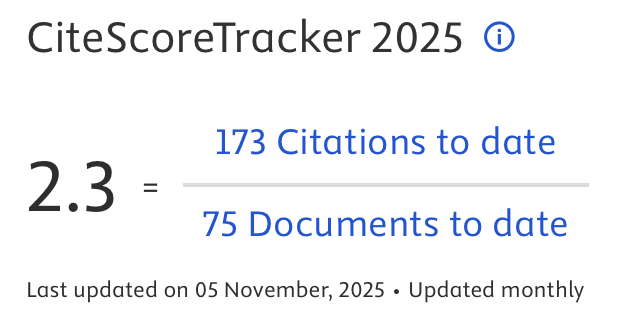KRITIK METODOLOGI PENAFSIRAN BUCAILLISME ATAS AYAT-AYAT SAINS
DOI:
https://doi.org/10.14421/qh.2018.1901-01Abstract
Discourse on scientific theology is quite often lead to debate among scholars and scientists today. The central point of the debate is on the relationship between the Qur’an dan science, namely the Total Agreement, Partial Agreement and the Refuse Group. Bucaillism as representation the Total Agreement group has the view that the Quran besides functioning as a moral-ethical guideline and guidance is also the source of all the phenomena of science. This article to photograph what and how bucaillism, find the cause and do methodological criticisms on it. This research concludes that the tendency towards the progress of science becomes an important point in the progress of the civilization of Muslims. With the harmonization of science and religion, it can increase creativity and innovation in doing business in making discoveries. Qur’an which contains many creeds and moral-ethical and verses of science can be a guide for scientists in developing science and technology so that the benefit of humans and the environment is always maintained. Nevertheless, the argumentative basis in scientific research is not only based on the literal meaning of the text but leads to the moral-ethical content.
Keyword: Bucaillism, Quran, Phenomena of Science
 Abstract viewed: 1221 times
|
Abstract viewed: 1221 times
|
 PDF downloaded = 3339 times
PDF downloaded = 3339 times
References
Amal, Taufik A. Metode dan Alternatif Neomoderenisme Islam. Bandung: Penerbit Mizan, 2008.
Amal, Taufik A. Neomodernisme Islam Fazlur Rahman. Bandung: Penerbit Mizan, 2008.
Dhahabî (al), Muh}ammad Huseyn. al-Tafsîr wa al-Mufassirûn. Mesir: Maktabah Mus}‘ab bin Umar, 2004.
Fakhry, Majid. Sejarah Filsafat Islam; Sebuah Peta Kronologis. Bandung: Penerbit Mizan, 2011.
Fauzi, Mansur. Pro-Kontra Tafsir Ilmi. Yogyakarta: Penerbit Pustaka Pelajar, 2010.
Guessoum, Nidhal. Islam’s Quantum Question Reconciling Muslim Tradition and Modern Science. London: I.B.Tauris and Co Ltd, 2011.
Hardiman, Budi. Seni Memahami: Hermeneutika dari Schleiermacher sampai Gadamer. Sleman: Kanisius, 2016.Amal, Taufik A., Neomodernisme Islam Fazlur Rahman, Penerbit Mizan, 2008.
Kawakibî (al), Abd al-Rah}mân. Tabic al-Istibdad in Akmâl Kamila. Beirut: Muassasa al-Arabiyya li-Dirasat wa al-Nashr, 2009.
Komarudin, Hidayat. Memahami Bahasa Agama Sebuah Kajian Hermeneutik. Jakarta: Paramadina, 2010.
Massimo, Campanini. “Qur’an and Science: a Hermeneutica Approach”. Journal of Qur'anic Studies. Vol. 7. No. 1, 2015.
Mehdi, Golshani. The Scientific Dimension of the Quran, dalam http://www.al-islam.org hlm.9/ diakses 16 Agustus 2018.
Palmer, Ricard E. Hermeneutics Interpretation Theory in Schleiermacher, Dilthey, Heidegger and Gadamer. Evanston: Northwestern University Press, 1969.
Qarad}awî (al), Yûsuf. Islâm Had}arât al-Ghad. Kairo: El-Falah Foundation, 2008.
Ricoeur, Paul. Teori Interpretasi: Memberlah Makna dalam Anatomi Teks, Terj. Masnur Hery. Yogyakrta: Penerbit IRCiSoD, 2012.
Rifki, Muhida. Kiamat Berdasarkan Penemuan Sains Terbaru. Jakarta: Penerbit RAN-IFI, 2017.
Ritzer, George & Barry Smart (eds.). Handbook of Social Theory. London: SAGE, 2001.
Saleh, Daulay. Merajut Harmonisasi Filosofis, Sains, dan Agama: Menimbang Posisi Fritjof Capra di Tengah Antagonisme Sains dan Agama, dalam http://salehdaulay.com/ diakses 29 Agustus 2018.
Shihab, M. Quraish. Menabur Pesan Illahi. Tangerang: Lentera hati, 2010.
Sibawaihi. Hermeneutika al-Qur’an Fazlur Rahman. Yogyakarta: Jalasutra, 2009.
Syamsuddin, Sahiron. Hermeneutika dan Pengembangan Ulumul Qur’an. Yogyakarta: Nawesea Press, 2009.
Yahya, Harun. Keajaiban al-Qur’an, Terj. Rini N. Badariyah dan Ary Nilandari. Bandung: Arkan Publishing, 2008.
Downloads
Published
How to Cite
Issue
Section
License
Publishing your paper with Jurnal Studi Ilmu-ilmu al-Qur'an dan Hadis means that the author or authors retain the copyright in the paper. Jurnal Studi Ilmu-ilmu al-Qur'an dan Hadis uses license CC-BY-NC-ND or an equivalent license as the optimal license for the publication, distribution, use, and reuse of scholarly works. This license permits anyone to copy and redistribute the material in any medium or format and must give appropriate credit, provide a link to the license, and indicate if changes were made. If you remix, translate, transform or build upon the material you may use it for private use only and not for distribution. Jurnal Studi Ilmu-ilmu al-Qur'an dan Hadis granted an exclusive non-commercial reuse license by the author(s), but the author(s) are able to put the paper onto a website, distribute it to colleagues, give it to students, use it in your thesis, etc, so long as the use is not directed at a commercial advantage or toward private monetary gain. The author(s) can reuse the figures and tables and other information contained in their paper published by Jurnal Studi Ilmu-ilmu al-Qur'an dan Hadis in future papers or work without having to ask anyone for permission, provided that the figures, tables, or other information that is included in the new paper or work properly references the published paper as the source of the figures, tables or other information, and the new paper or work is not direct at a private monetary gain or commercial advantage.
Jurnal Studi Ilmu-ilmu al-Qur'an dan Hadis journal Open Acces articles are distrubuted under the Creative Commons Attribution-NonCommercial-NoDerivatives 4.0 International (CC BY-NC-ND 4.0). Article can be read, copy and redistribute the material ini any medium or format under the following conditions:
Attribution — You must give appropriate credit, provide a link to the license, and indicate if changes were made. You may do so in any reasonable manner, but not in any way that suggests the licensor endorses you or your use.
NonCommercial — You may not use the material for commercial purposes.
NoDerivatives — If you remix, transform, or build upon the material, you may not distribute the modified material.









